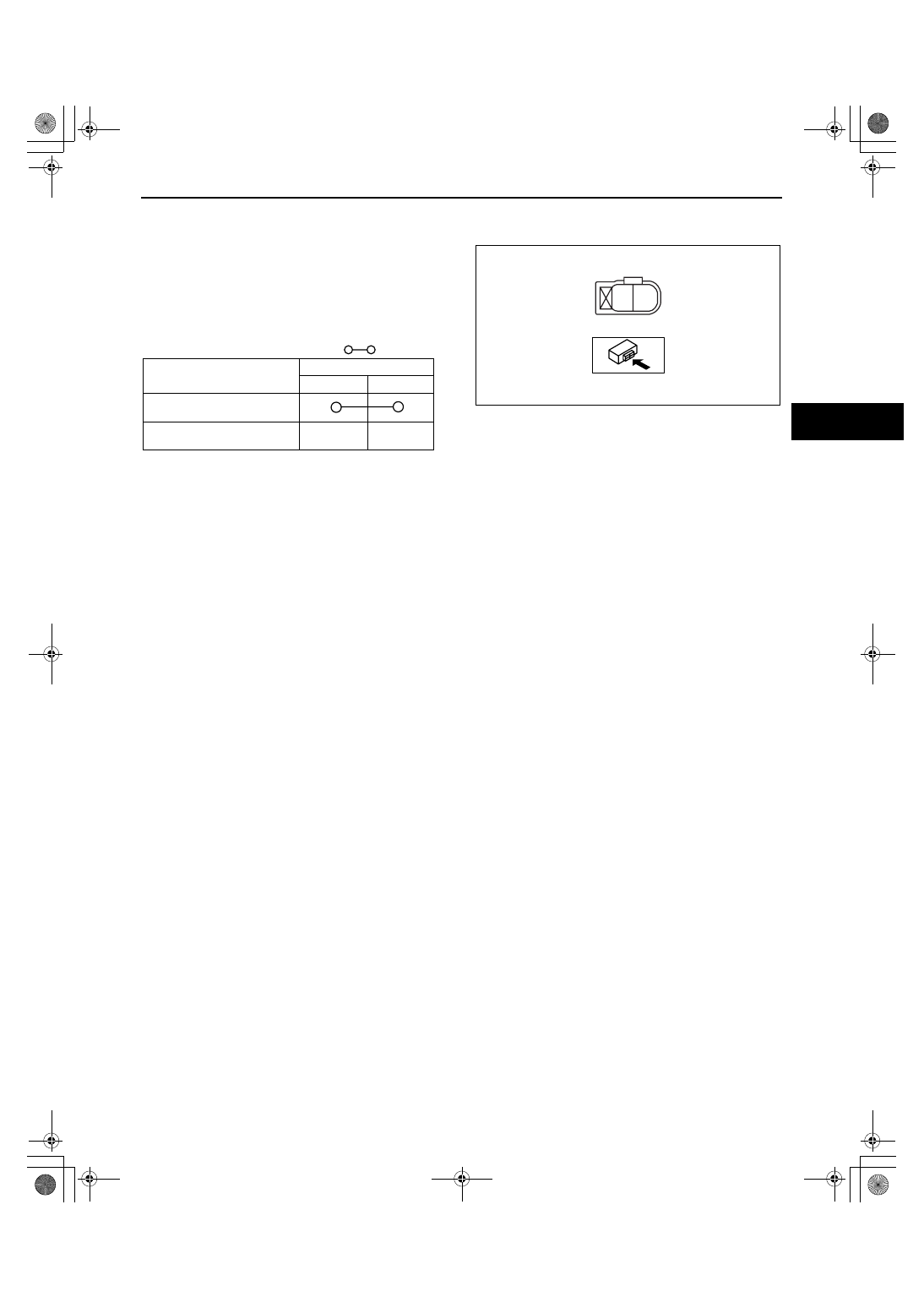Mazda CX 7. Manual - part 210

CONVENTIONAL BRAKE SYSTEM
04-11–11
04-11
BRAKE FLUID LEVEL SENSOR INSPECTION
id041100801400
1. Disconnect the brake fluid level sensor connector from the master cylinder.
2. Inspect for continuity according to fluid level
between the brake fluid level sensor terminals.
• If not as indicated in the table, replace the
No.1 reserve tank. (See 04-11-10 MASTER
CYLINDER REMOVAL/INSTALLATION.)
End Of Sie
WM: POWER BRAKE UNIT
POWER BRAKE UNIT INSPECTION
id041100801700
Note
• The following inspection methods are simple inspection methods to judge the function of the power brake
unit.
• If there is any malfunction in the power brake unit, replace the power brake unit as a single unit.
Without Using SST
Operation inspection
1. With the engine stopped, pump the pedal a few times.
2. With the pedal depressed, start the engine.
3. If the pedal moves down slightly immediately after starting the engine, the unit is normal.
Vacuum function inspection
1. Start the engine.
2. Stop the engine after driving the vehicle for 1— 2 min.
3. Depress the pedal with normal force.
4. If the first pedal stroke is long and becomes shorter with subsequent strokes, the unit is normal.
• If a problem is found, inspect for damage to or improper installation of the check valve and vacuum hose.
After repairing, inspect again.
Vacuum loss function inspection
1. Start the engine.
2. Depress the pedal with normal force.
3. With the pedal depressed, stop the engine.
4. Hold the pedal depressed for approx. 30 s.
5. If the pedal height does not change during this time, the unit is normal.
A
B
ampjjw00002672
: Continuity
Condition
Above MIN
Below MIN
Terminal
B
A
acxuuw00001089
1871-1U-06B(04-11).fm 11 ページ 2006年3月15日 水曜日 午前11時13分